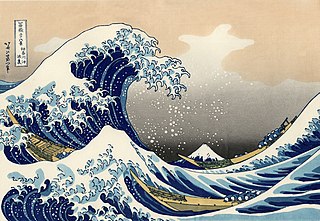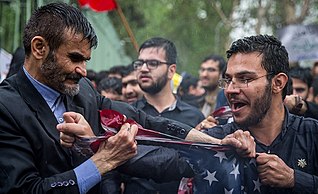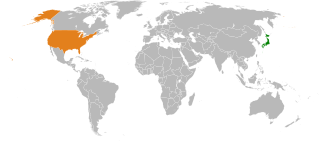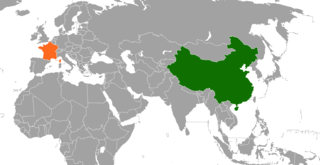
The Tokugawa shogunate, also known as the Edo shogunate, was the military government of Japan during the Edo period from 1603 to 1868.

The Edo period, also known as the Tokugawa period, is the period between 1603 and 1868 in the history of Japan, when Japan was under the rule of the Tokugawa shogunate and the country's 300 regional daimyo. Emerging from the chaos of the Sengoku period, the Edo period was characterized by economic growth, strict social order, isolationist foreign policies, a stable population, perpetual peace, and popular enjoyment of arts and culture, colloquially referred to as Ōedo.

Bakumatsu was the final years of the Edo period when the Tokugawa shogunate ended. Between 1853 and 1867, under foreign diplomatic and military pressure, Japan ended its isolationist foreign policy known as sakoku and changed from a feudal Tokugawa shogunate to the modern empire of the Meiji government. The major ideological-political divide during this period was between the pro-imperial nationalists called ishin shishi and the shogunate forces, which included the elite shinsengumi swordsmen.

Anti-Americanism is a term that can describe several sentiments and positions including opposition to, fear of, distrust of, prejudice against or hatred toward the United States, its government, its foreign policy, or Americans in general.

Sonnō jōi was a yojijukugo phrase used as the rallying cry and slogan of a political movement in Japan in the 1850s and 1860s, during the Bakumatsu period. Based on Neo-Confucianism and Japanese nativism, the movement sought to overthrow the Tokugawa shogunate and restore the power of the Emperor of Japan.

Anti-Chinese sentiment is a fear or dislike of China, Chinese people and/or Chinese culture, it is also referred to as Sinophobia. It is frequently directed at Chinese minorities which live outside China and it involves immigration, the development of national identities in neighbouring countries, political ideologies, disparity of wealth, the past tributary system of Imperial China, majority-minority relations, imperial legacies, and racism.

Anti-Japanese sentiment, a form of racism against Asians, involves the hatred or fear of anything which is Japanese, be it its culture or its people. Its opposite is Japanophilia.
Anti-Russian sentiment or Russophobia, is dislike or fear or hatred of Russia, Russian people, Russian culture, or Russian policy. The Collins English Dictionary defines it as intense and often irrational hatred of Russia. The opposite of Russophobia is Russophilia.
Kokugaku was an academic movement, a school of Japanese philology and philosophy originating during the Tokugawa period. Kokugaku scholars worked to refocus Japanese scholarship away from the then-dominant study of Chinese, Confucian, and Buddhist texts in favor of research into the early Japanese classics.
Japanese philosophy has historically been a fusion of both indigenous Shinto and continental religions, such as Buddhism, Taoism and Confucianism. Formerly heavily influenced by both Chinese philosophy and Indian philosophy, as with Mitogaku and Zen, much modern Japanese philosophy is now also influenced by Western philosophy.

The Japanese term shinbutsu bunri (神仏分離) indicates the separation of Shinto from Buddhism, introduced after the Meiji Restoration which separated Shinto kami from buddhas, and also Buddhist temples from Shinto shrines, which were originally amalgamated. It is a yojijukugo phrase.

International relations between Japan and the United States began in the late 18th and early 19th century with the diplomatic but force-backed missions of U.S. ship captains James Glynn and Matthew C. Perry to the Tokugawa shogunate. Following the Meiji Restoration, the countries maintained relatively cordial relations. Potential disputes were resolved. Japan acknowledged American control of Hawaii and the Philippines, and the United States reciprocated regarding Korea. Disagreements about Japanese immigration to the U.S. were resolved in 1907. The two were allies against Germany in World War I.

For over 15 centuries, the relationship between Japan and Korea was characterized by cultural exchanges, economic trade, political contact and military confrontations, all of which underlie their relations even today. During the ancient era, exchanges of cultures and ideas between Japan and mainland Asia were common through migration via the Korean Peninsula, and diplomatic contact and trade between the two.

Hirata Atsutane was a Japanese scholar, conventionally ranked as one of the Four Great Men of Kokugaku (nativist) studies, and one of the most significant theologians of the Shintō religion. His literary name was Ibukinoya (気吹舎), and his primary assumed name was Daigaku. He also used the names Daikaku (大角), Gentaku (玄琢), and Genzui (玄瑞). His personal name was Hanbē (半兵衛).

China–France relations, also known as Franco-Chinese relations or Sino-French relations, are the interstate relations between China and France.

A mitamaya is an altar used in Shinto-style ancestor worship, dedicated in the memory of deceased forebears. It generally has a mirror symbolizing the spirits of the deceased or a tablet bearing their names and is used not only to enshrine blood relatives, but also to honor respected non-family members.

China–Japan relations or Sino-Japanese relations are the bilateral relations between China and Japan. The countries are geographically separated by the East China Sea. Japan has been strongly influenced throughout its history by China, especially by the East and Southeast through the gradual process of Sinicization with its language, architecture, culture, cuisine, religion, philosophy, and law. When Japan was forced to open trade relations with the West after the Perry Expedition in the mid-19th century, Japan plunged itself through an active process of Westernization during the Meiji Restoration in 1868 and began viewing China under the Qing dynasty as an antiquated civilization unable to defend itself against foreign forces—in part due to the First and Second Opium Wars along with the Eight-Nation Alliance's involvement in suppressing the Boxer Rebellion. Japan eventually took advantage of such weaknesses by invading China, including the First Sino-Japanese War and the Second Sino-Japanese War.

Edo Neo-Confucianism, known in Japanese as Shushi-Gaku, refers to the schools of Neo-Confucian philosophy that developed in Japan during the Edo period. Neo-Confucianism reached Japan during the Kamakura period. The philosophy can be characterized as humanistic and rationalistic, with the belief that the universe could be understood through human reason, and that it was up to man to create a harmonious relationship between the universe and the individual. The 17th-century Tokugawa shogunate adopted Neo-Confucianism as the principle of controlling people and Confucian philosophy took hold. Neo-Confucians such as Hayashi Razan and Arai Hakuseki were instrumental in the formulation of Japan's dominant early modern political philosophy.

Korea has had a long history of both resistance against and subordination to Imperial China. Until the onset of Western imperialism in the 19th century, Korea had been part of the sinocentric East Asian regional order.
Shinto is a religion native to Japan with a centuries'-long history tied to various influences in origin.


















